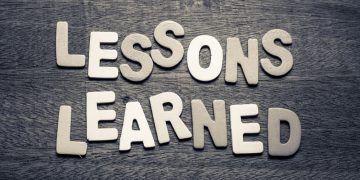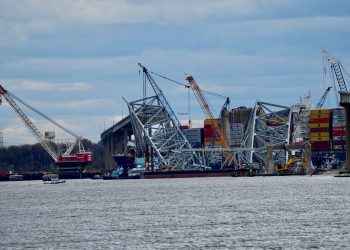AMSA has published the fourth issue of its Maritime Safety Awareness Bulletin entitled ”Shaping Shipping for People”, which focuses on the safety issues and risks associated with working over the side.
Shipboard tasks such as mooring/unmooring, surveys, cleaning, maintenance and rigging (e.g. an accommodation ladder or pilot ladder) may require seafarers and other persons to work or access over the side of the ship. Working over the side is a high risk operation and must be treated accordingly.
Unfortunately these tasks when undertaken in an unsafe manner, have resulted in serious accidents with five fatalities reported over a period of 5 years in Australian waters. Specifically, in the period between 2011 and 2015, AMSA received a total of 20 working over the side incidents but 5 fatalities had occurred.

AMSA suggests always to conduct a risk assessment, which is critical for shipboard activities involving working over the side. An effective risk assessment for working over the side must firstly be treated as working at height and must consider falling overboard. The hierarchy of controls provides risk control options at various levels, with ‘elimination of the hazard’ being the most reliable and safest option.

Controlling the risks of working over the side
The hierarchy of controls should be used to eliminate high risk tasks whenever practicable. The following should be considered:
Level 1: Elimination
• use of drones or remote cameras for inspection over the side
• use of water gauges (manometer) for calculating draughts on the outboard side.
Level 2: Substitution
• use of a boat instead of ladder for over the side tasks.
Level 3: Administrative measures
• implement effective procedures for working over the side. The procedures should incorporate the same rigour and control measures as for providing safe access to the ship. The International Maritime Organization (IMO) Circular MSC.1/Circ.1331 provides requirements on this, in particular ensuring:
– adequate lighting
– safe access location away from working hazards
– lifebuoy equipped with a self-activating light and a separate lifeline available for immediate use.
• use of appropriate Personal Protective Equipment (PPE) including fall prevention equipment and inflatable lifevest
• when using personnel baskets, they should be fitted with a secondary means of securing to the crane and people inside should be wearing harnesses which are attached to life lines
• conduct regular man overboard and recovery drills and rectify identified deficiencies
• do not work alone. Keep the master and/or supervisor informed and ensure the task is actively monitored at all times from the vessel
• ensure equipment and PPE are appropriately maintained and suitable for the task at hand.
AMSA highlights that an effective safety culture promotes the understanding to all shipboard crew that the goals of the company will be achieved through accepted safety procedures, practices and behaviours [1, 4]. This in effect leads to seafarers being committed, not just because of rules and regulations but through individual choice, to safe actions and behaviours at all times.
Further details may be found by reading the Marine Safety Bulletin below
Source & Image credit: AMSA

































































